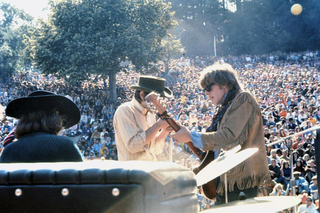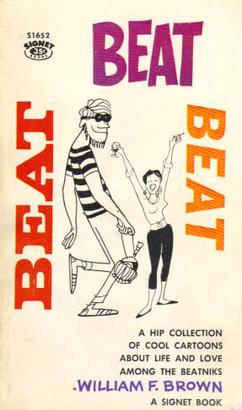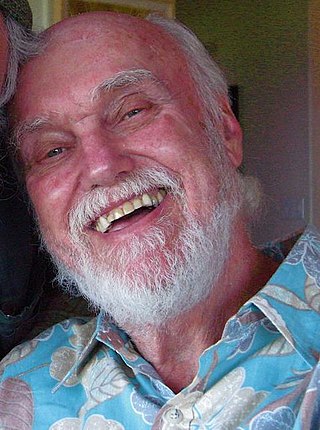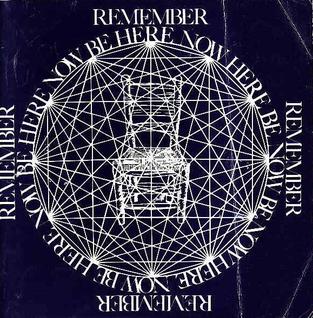
Jean-Louis Lebris de Kérouac, known as Jack Kerouac, was an American novelist and poet who, alongside William S. Burroughs and Allen Ginsberg, was a pioneer of the Beat Generation.

The Summer of Love was a major social phenomenon that occurred in San Francisco during the summer of 1967. As many as 100,000 people, mostly young people, hippies, beatniks, and 1960s counterculture figures, converged in San Francisco's Haight-Ashbury district and Golden Gate Park. More broadly, the Summer of Love encompassed hippie culture, spiritual awakening, hallucinogenic drugs, anti-war sentiment, and free love throughout the West Coast of the United States, and as far away as New York City. An episode of the PBS documentary series American Experience referred to the Summer of Love as "the largest migration of young people in the history of America".

A hippie, also spelled hippy, especially in British English, is someone associated with the counterculture of the 1960s, originally a youth movement that began in the United States during or around 1964 and spread to different countries around the world. The word hippie came from hipster and was used to describe beatniks who moved into New York City's Greenwich Village, San Francisco's Haight-Ashbury district, and Chicago's Old Town community. The term hippie was used in print by San Francisco writer Michael Fallon, helping popularize use of the term in the media, although the tag was seen elsewhere earlier.

Beatniks were members of a social movement in the mid-20th century, who subscribed to an anti-materialistic lifestyle. They rejected the conformity and consumerism of mainstream American culture and expressed themselves through various forms of art, such as literature, poetry, music, and painting. They also experimented with spirituality, drugs, sexuality, and travel. The term "beatnik" was coined by San Francisco Chronicle columnist Herb Caen in 1958, as a derogatory label for the followers of the Beat Generation, a group of influential writers and artists who emerged during the era of the Silent Generation's maturing, from as early as 1946 to as late as 1963, but the subculture was at its most prevalent in the 1950s. The name was inspired by the Russian suffix "-nik", which was used to denote members of various political or social groups. The term "beat" originally was used by Jack Kerouac in 1948 to describe his social circle of friends and fellow writers, such as Allen Ginsberg, William S. Burroughs, and Neal Cassady. Kerouac said that "beat" had multiple meanings, such as "beaten down", "beatific", "beat up", and "beat out". He also associated it with the musical term "beat", which referred to the rhythmic patterns of jazz, a genre that influenced many beatniks.

A counterculture is a culture whose values and norms of behavior differ substantially from those of mainstream society, sometimes diametrically opposed to mainstream cultural mores. A countercultural movement expresses the ethos and aspirations of a specific population during a well-defined era. When oppositional forces reach critical mass, countercultures can trigger dramatic cultural changes. Prominent examples of countercultures in the Western world include the Levellers (1645–1650), Bohemianism (1850–1910), the more fragmentary counterculture of the Beat Generation (1944–1964), and the globalized counterculture of the 1960s (1965–1973). Countercultures differ from subcultures.

The Beat Generation was a literary subculture movement started by a group of authors whose work explored and influenced American culture and politics in the post-World War II era. The bulk of their work was published and popularized by Silent Generationers in the 1950s, better known as Beatniks. The central elements of Beat culture are the rejection of standard narrative values, making a spiritual quest, the exploration of American and Eastern religions, the rejection of economic materialism, explicit portrayals of the human condition, experimentation with psychedelic drugs, and sexual liberation and exploration.

Ram Dass, also known as Baba Ram Dass, was an American spiritual teacher, guru of modern yoga, psychologist, and writer. His best-selling 1971 book Be Here Now, which has been described by multiple reviewers as "seminal", helped popularize Eastern spirituality and yoga in the West. He authored or co-authored twelve more books on spirituality over the next four decades, including Grist for the Mill (1977), How Can I Help? (1985), and Polishing the Mirror (2013).

The Youth International Party (YIP), whose members were commonly called Yippies, was an American youth-oriented radical and countercultural revolutionary offshoot of the free speech and anti-war movements of the late 1960s. It was founded on December 31, 1967. They employed theatrical gestures to mock the social status quo, such as advancing a pig as a candidate for President of the United States in 1968. They have been described as a highly theatrical, anti-authoritarian, and anarchist youth movement of "symbolic politics".

The British counter-culture or underground scene developed during the mid 1960s, and was linked to the hippie subculture of the United States. Its primary focus was around Ladbroke Grove and Notting Hill in London. It generated its own magazines and newspapers, bands, clubs and alternative lifestyle, associated with cannabis and LSD use and a strong socio-political revolutionary agenda to create an alternative society.
The Psychedelic era was the time of social, musical and artistic change influenced by psychedelic drugs, occurring from the mid-1960s to mid-1970s. The era was defined by the proliferation of LSD and its following influence in the development of psychedelic music and psychedelic film in the Western world.

The freak scene was originally a component of the bohemian subculture which began in California in the mid-1960s, associated with the hippie movement. The term is also used to refer to the post-hippie and pre-punk period of the early to mid-1970s. It can be viewed as encompassing a range of disparate groups including hippies, pacifists, politicized radicals, as well as psychedelic and progressive rock fans. Those connected with the subculture often attended rock festivals, free festivals, happenings, and alternative society gatherings of various kinds.

Joyce Johnson is an American author of fiction and nonfiction. She was born Joyce Glassman in 1935 to a Jewish family in New York City and raised in the Morningside Heights neighborhood of Manhattan, a few blocks from the apartment of Joan Vollmer Adams where William Burroughs, Allen Ginsberg and Jack Kerouac lived from 1944 to 1946. She was a child actress and appeared in the Broadway production of I Remember Mama, which she writes about in her 2004 memoir Missing Men.

Be Here Now, or Remember, Be Here Now, is a 1971 book on spirituality, yoga, and meditation by the American yogi and spiritual teacher Ram Dass. The core book was first printed in 1970 as From Bindu to Ojas and its current title comes from a statement his guide, Bhagavan Das, made during Ram Dass's journeys in India. The cover features a mandala incorporating the title, a chair, radial lines, and the word "Remember" repeated four times.
Barry Miles is an English author known for his participation in and writing on the subjects of the 1960s London underground and counterculture. He is the author of numerous books and his work has also regularly appeared in leftist newspapers such as The Guardian. In the 1960s, he was co-owner of the Indica Gallery and helped start the independent newspaper International Times.

The counterculture of the 1960s was an anti-establishment cultural phenomenon and political movement that developed in the Western world during the mid-20th century. It began in the early 1960s, and continued through the early 1970s. It is often synonymous with cultural liberalism and with the various social changes of the decade. The effects of the movement have been ongoing to the present day. The aggregate movement gained momentum as the civil rights movement in the United States had made significant progress, such as the Voting Rights Act of 1965, and with the intensification of the Vietnam War that same year, it became revolutionary to some. As the movement progressed, widespread social tensions also developed concerning other issues, and tended to flow along generational lines regarding respect for the individual, human sexuality, women's rights, traditional modes of authority, rights of people of color, end of racial segregation, experimentation with psychoactive drugs, and differing interpretations of the American Dream. Many key movements related to these issues were born or advanced within the counterculture of the 1960s.
The Source is a 1999 documentary film directed by Chuck Workman.
The hippie subculture began its development as a youth movement in the United States during the early 1960s and then developed around the world.

Underground culture, or simply underground, is a term to describe various alternative cultures which either consider themselves different from the mainstream of society and culture, or are considered so by others. The word "underground" is used because there is a history of resistance movements under harsh regimes where the term underground was employed to refer to the necessary secrecy of the resisters.

NOLA Express is a publication started in 1967 in New Orleans by the young poets Darlene Fife and Robert Head. Part the underground free press movement of the 1960s, the paper was opposed to American imperialism, racism and materialism. It protested the Vietnam War and other government policies, along with social hypocrisies.














